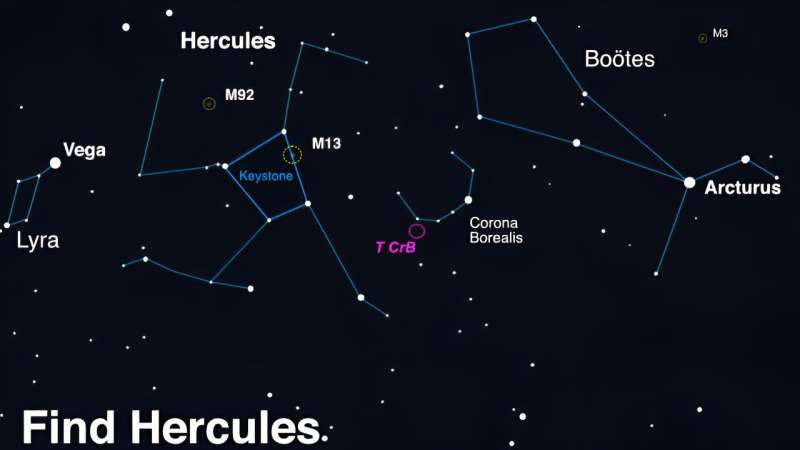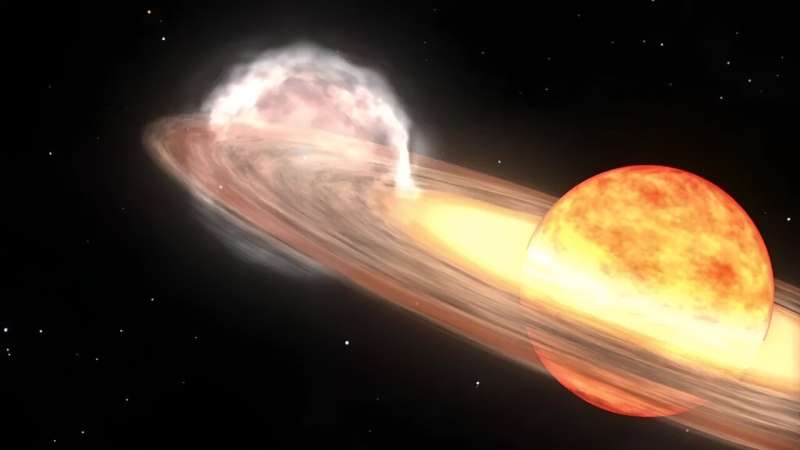This article has been reviewed according to Science X's editorial process and policies. Editors have highlighted the following attributes while ensuring the content's credibility:
fact-checked
trusted source
proofread
July's night sky notes: A hero, a crown, and possibly a nova

High in the summer sky, the constellation Hercules acts as a centerpiece for late-night stargazers. At the center of Hercules is the "Keystone," a near-perfect square shape between the bright stars Vega and Arcturus that is easy to recognize and can serve as a guidepost for some amazing sights. While not the brightest stars, the shape of the hero's torso, like a smaller Orion, is nearly directly overhead after sunset. Along the edge of this square, you can find a most magnificent jewel—the Great Globular Cluster of Hercules, also known as Messier 13.
Globular clusters are a tight ball of very old stars, closer together than stars near us. These clusters orbit the center of our Milky Way like tight swarms of bees. One of the most famous short stories, "Nightfall" by Isaac Asimov, imagines a civilization living on a planet within one of these star clusters. They are surrounded by so many stars so near that it is always daytime except for once every millennium, when a special alignment (including a solar eclipse) occurs, plunging their planet into darkness momentarily. The sudden night reveals so many stars that it drives the inhabitants mad.

Back here on our home planet Earth, we are lucky enough to experience skies full of stars, a beautiful moon, and regular eclipses. On a clear night this summer, take time to look up into the Keystone of Hercules and follow this sky chart to the Great Globular Cluster of Hercules. A pair of binoculars will show a faint, fuzzy patch, while a small telescope will resolve some of the stars in this globular cluster.
Between Hercules and the ice-cream-cone-shaped Boötes constellation, you'll find the small constellation Corona Borealis, shaped like the letter "C." Astronomers around the world are watching T Coronae Borealis, also known as the "Blaze Star" in this constellation closely because it is predicted to go nova sometime this summer. There are only five known nova stars in the whole galaxy. It is a rare observable event and you can take part in the fun. The Astronomical League has issued a Special Observing Challenge that anyone can participate in. Just make a sketch of the constellation now (you won't be able to see the nova) and then make another sketch once it goes nova.
More information: Tune into our mid-month article on the Night Sky Network page, as we prepare for the Perseids--and keep looking up.
Provided by NASA




















